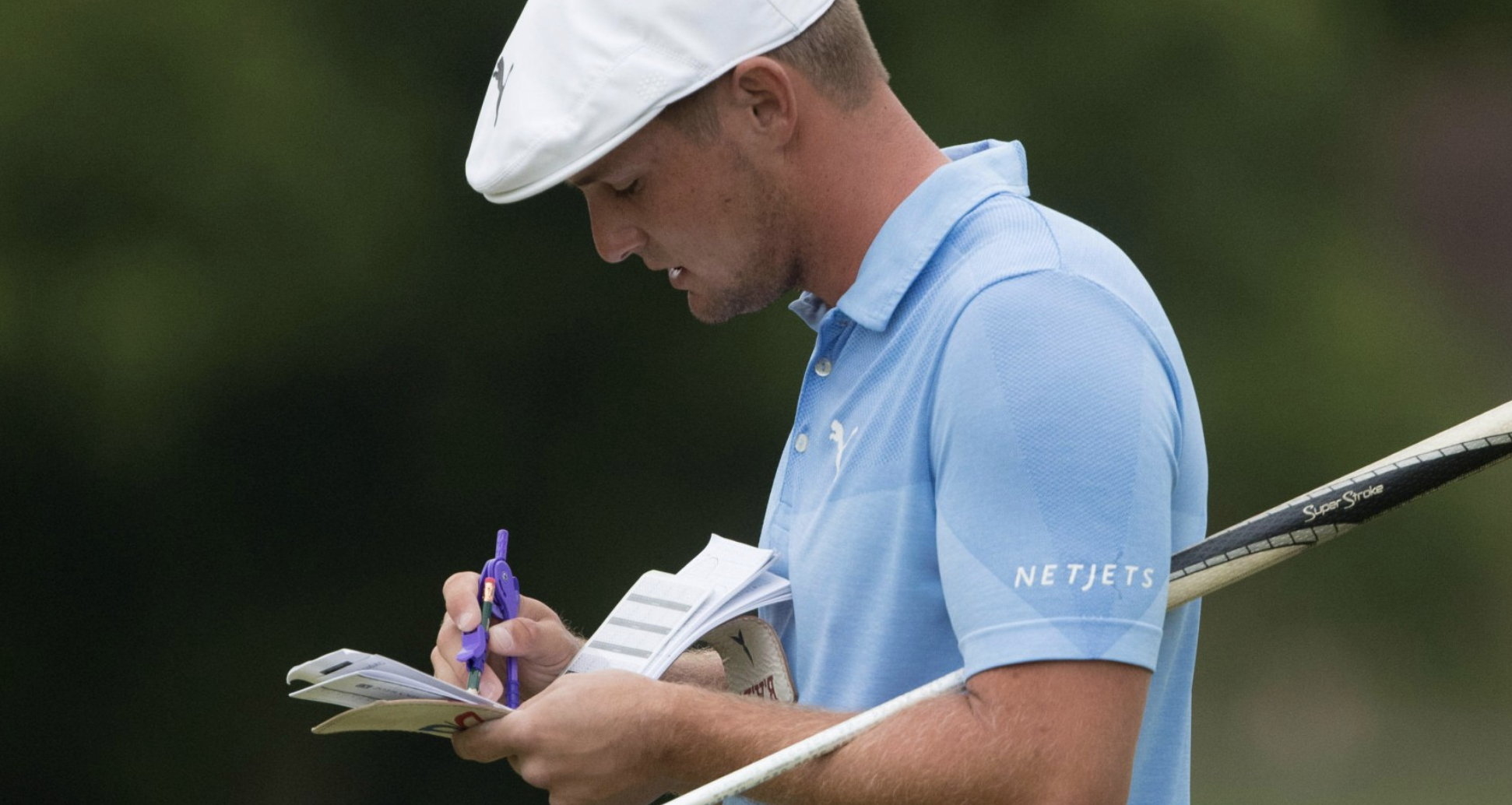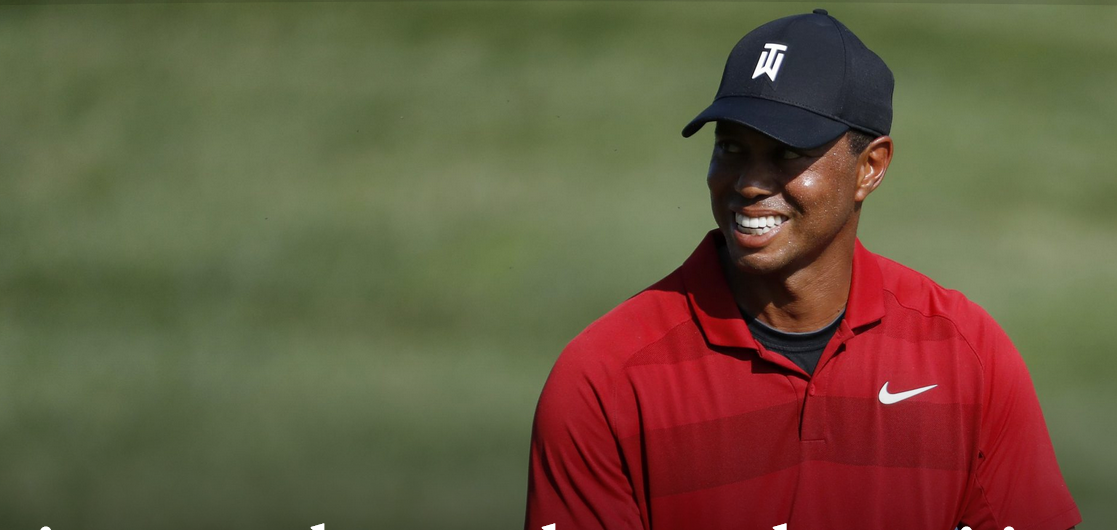With no incentive to induce a headache other than acting as a professional golfer protecting the field, Joel Dahmen spoke out when asked by a fan about a bogus drop he saw Sung Kang take at the Quicken Loans National. (Kang finished third and earned a spot in The Open.)
A witness and ShotLink volunteer corroborated Dahmen's account with not a shred of doubt about what he saw, reports Bill Speros. The dispute grew so heated that they even let a group go through as Dahmen sought to protect the field and Kang insisted his ball started over dry land before a last minute plunge into the TPC Potomac hazard.
The PGA Tour backed Kang's account of the drop and suggested an absence of clear evidence:
“A PGA Tour Rules Official handled the ruling, interviewing both players, caddies and marshals in the vicinity. The official then took Kang back to where he hit his second shot, and Kang confirmed his original belief that his shot had indeed crossed the margin of the hazard. With no clear evidence to prove otherwise, it was determined by the official that Kang could proceed with his fourth shot as intended, following a penalty stroke and subsequent drop. The PGA Tour will have no additional comment on this matter.”
While ShotLink is manned by volunteers working long hours and prone to the occasional mistake, they are generally very good at the most basic task: zero in on the ball and mark it for the computers to do their thing. The account of Dahmen, when combined with his anger at the choice by Kang to drop closer to the hole and Kang's claim of being "95% sure" where his ball crossed, sound dreadful given how much we know today's players are loathe to call out their peers in the PGA Tour's increasingly fraternal culture.
Meanwhile, the corresponding ShotLink depiction of the ball's landing spot suggests Kang's ball would have needed to take a hard last minute hook into the hazard. Dahmen's concern was backed up by ShotLink volunteer Michael Klosk's account to Golfweek:
“Kang was insistent (’95 percent sure’ in his own words) his ball came back and entered the hazard at about 35 yards out. I caught bits and pieces of the exchange, but the rules official did quote ’95 percent sure is not 100 percent sure’ before driving Kang back to look at the line again. Kang then returned and argued some more with Dahmen, to which (Dahmen) replied, ‘If you can sleep at night, then take your drop,'” Klock said in an email to Golfweek detailing the encounter.
The incident lands as the PGA Tour and several players have begun to chip away at the Rules of Golf. Consider:
--The PGA Tour has never issued a statement about the backstopping practice even after Jimmy Walker wrote on Twitter that he leaves a ball down for those he likes or feels sorry for. Any player who might mark their ball in a desire to protect the field, is now seen as not "one of the boys."
--The PGA Tour openly defied the USGA and R&A's views on distance and seems poised to fight any effort to protect the role of skill in golf in order to market the athleticism of today's players.
--Phil Mickelson stopped his ball from rolling down a slope at the U.S. Open and has not been --condemned or fined (to our knowledge) for conduct unbecoming. Two young superstars found his behavior funny.
--For years players have regularly "fixed a ball mark" without asking their playing partner for approval. It's apparent they really just want to smooth out a blemish in the green. The practice is so pervasive that we now have the dreadful new 2019 rule of golf allowing for players to pamper their line to the hole.
--The PGA Tour has resisted empowering officials to hand out slow play penalties for years, with former Commish Tim Finchem even declaring that he didn't see such rules enforcement as necessary.
--Under Finchem's watch, the PGA Tour steadfastly refused to support drug testing until golf wanted to join the Olympic movement.
Add it all up and the optics are deteriorating. The PGA Tour acts like rules are more of an annoyance than serving as the foundation for maintaining golf's special place in the sporting universe. For years players have barked about making their own rules--usually after a USGA course setup blunder--but the players then remind us why that would not be a good idea.
Over time, the PGA Tour has been able to avoid being seen as condoning shady behavior by making sure the guys take their hats off to shake hands, donating more than all other sports (combined) to charity, and banking on sponsors to keep supporting these (mostly) high-integrity athletes.
The problem now? Legalized gambling is coming. Golf is seen as a potentially lucrative opportunity, one that will dry up the minute bettors think the bro culture that bred backstopping and this peculiar culture of devaluing the importance of rules for unclear reasons.
And how long before the folks putting their sponsorship dollars on golf wonder what other rules-workarounds the players are up to? Or worse, when will sponsors see incidents like Dahmen v. Kang or players leaving a ball down as a backstop for a buddy, and question the price they pay to be associated with a sport known for its adherence to rules, not its ability to fudge the rules.
Yes the Rules of Golf are wordy and annoying. Especially when you just want to tap a bump in the green or when asking players to take their medicine when hitting a bad shot into a hazard. But the rules are also in place to help Joel Dahmen's of the world protect the field. The PGA Tour needs to start taking them as seriously as Joel Dahmen did Sunday at the Quicken Loans National.






















